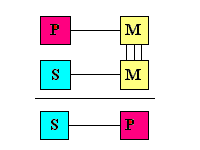|
|
|
Philosophy
103: Introduction to Logic
Syllogistic Fallacies
| I. Venn diagrams and logical analogies are two of the three
most common methods to test syllogisms. A third method is based on derived rules of
validity. |
|
A. We will look at some arguments that might initially seem
to be valid, but are not so. |
|
B. In each case, an informal explanation of its invalidity is
described. |
|
C. These six reasons are, in effect, rules of the syllogism.
Here, again, we follow Copi's
analysis. There are other sets of rules that equally apply to the analysis of the
syllogism, and you might want to inquire into some of these other methods. |
|
D. Corresponding to each rule of the syllogism is a fallacy
(or fallacies) which is applied to all arguments that do not follow that rule. |
|
E. Do not memorize the rules (or the rule numbers), but do
learn the names of the fallacies. The names of the fallacies describe what it is that
is mistaken about the argument. |
|
F. One way to think about the way a syllogism works is
to conceptualize the general idea that two things related to the same thing might be
related to each other. The following mnemonic model might be helpful. 
Since S is related to M, and P
is related to M, then S ought to be related to P. |
II. The Fallacies are explained individually on the following pages.
Note: Before you study these pages, know thoroughly the
quantity, quality, and distribution Chart for Standard
Form Categorical Propositions and Venn Diagrams for
Syllogisms.

|
|

